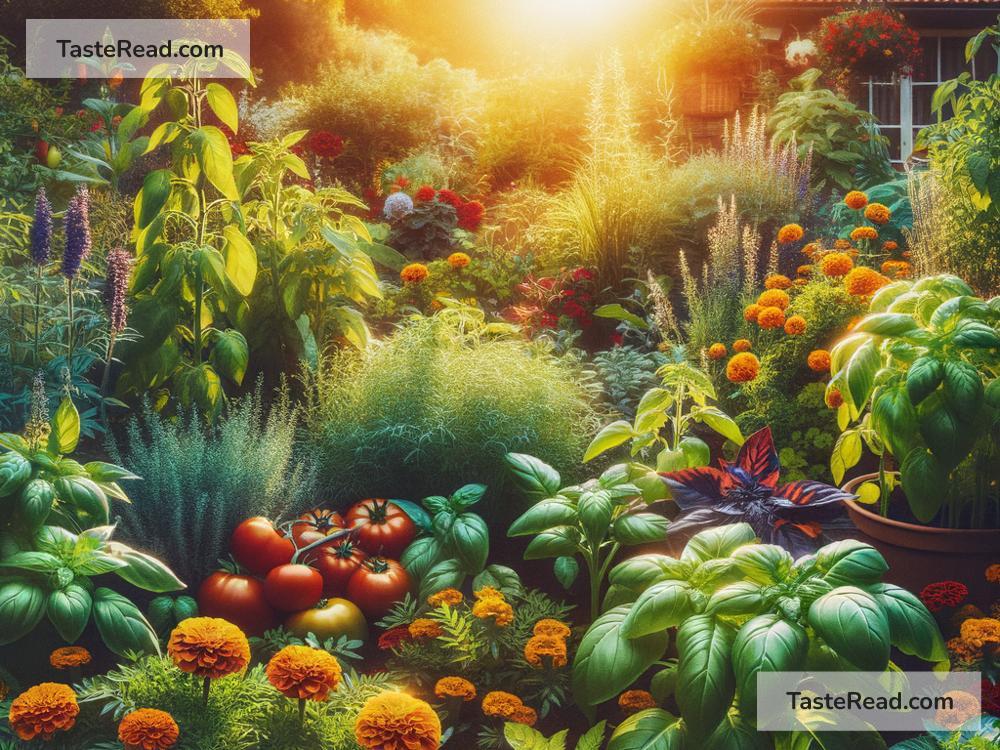How to Use Foods Grown with Companion Planting
In the wonderful world of gardening, there’s a superhero duo that doesn’t wear capes – we’re talking about companion planting. This natural, eco-friendly method involves planting different crops close to each other for mutual benefits such as improved growth, natural pest control, and even better flavor. But the adventure doesn’t stop at growing these plants together. Using foods grown through companion planting in your kitchen can bring a new level of freshness and vibrancy to your meals. Let’s dive into how you can make the most out of these plant-based partnerships in your cooking.
The Basics of Companion Planting
Before we cook, let’s talk about the roots of it all – quite literally! Companion planting is like matchmaking for plants. When certain plants grow side by side, they can help each other out in various ways. For instance, marigolds repel pests that love to nibble on tomatoes, while beans fix nitrogen in the soil, which helps corn thrive. It’s not just about keeping pests away; some combinations, like tomatoes and basil, can actually make each other taste better.
Harvesting Your Companion-Planted Goods
Harvesting your veggies and herbs at the right time is crucial. Early morning is best, after the dew has dried but before the midday sun. This helps ensure they’re at their peak freshness and flavor. For leafy greens, pick them when they’re young and tender. Root vegetables, like carrots planted near onions to ward off carrot flies, are usually ready when their tops start to peak out from the soil.
Cooking with Companion-Planted Foods
Now, onto the fun part – cooking with your harvest. Using foods grown through companion planting can elevate your dishes, not only in taste but in nutrition too. Here’s how to bring these amazing pairings from your garden to your table:
1. Fresh Herb Pesto
Herbs like basil and parsley grow well together and can make a fresh, vibrant pesto. Simply blend them with garlic, pine nuts (or any nut of your liking), Parmesan cheese, and olive oil for a quick sauce that’s perfect with pasta, bread, or drizzled over roasted vegetables.
2. Tomato and Basil Salad
A classic duo, tomatoes and basil, not only grow well together but are a match made in culinary heaven. Slice fresh tomatoes and layer them with mozzarella cheese and fresh basil leaves. Drizzle with balsamic vinegar and olive oil for a simple, flavorful salad.
3. Sautéed Green Beans and Garlic
Green beans and garlic are another great pair for companion planting, and they come together beautifully in a dish. Simply sauté green beans with minced garlic in olive oil until they’re tender-crisp. The garlic not only adds flavor but also helps deter pests in the garden.
4. Sweet Corn and Potato Chowder
Corn and potatoes can be good garden companions. In your kitchen, they can create a comforting, creamy chowder. Sauté onions and garlic, add diced potatoes and fresh corn kernels, then pour in vegetable broth. Simmer until the potatoes are tender, then blend half the mixture for a creamy yet chunky texture.
5. Carrot and Onion Stir-Fry
Carrots and onions protect each other from pests when grown together. In the kitchen, their flavors complement each other perfectly in a stir-fry. Add some bell peppers and quick-cooking protein like tofu or shrimp for a complete, vibrant, and healthy meal.
Benefits Beyond the Plate
Incorporating foods grown with companion planting into your meals is not just good for your health; it’s also good for the planet. This method reduces the need for chemical pesticides, promotes biodiversity, and encourages a more sustainable way of living. Plus, the flavor benefits from companion planting mean you can let the natural tastes of your ingredients shine, reducing the need for artificial flavorings or excessive salt.
In Conclusion
Companion planting is a testament to the power of natural harmony, and its benefits extend from the garden to the kitchen. By choosing to use foods nurtured through these plant-based partnerships, you’re not only adding a burst of flavor and nutrition to your meals but also adopting a more eco-conscious approach to gardening and cooking. So, the next time you’re planning your garden or your menu, consider the dynamic duos of the plant world. Your taste buds (and the planet) will thank you.


